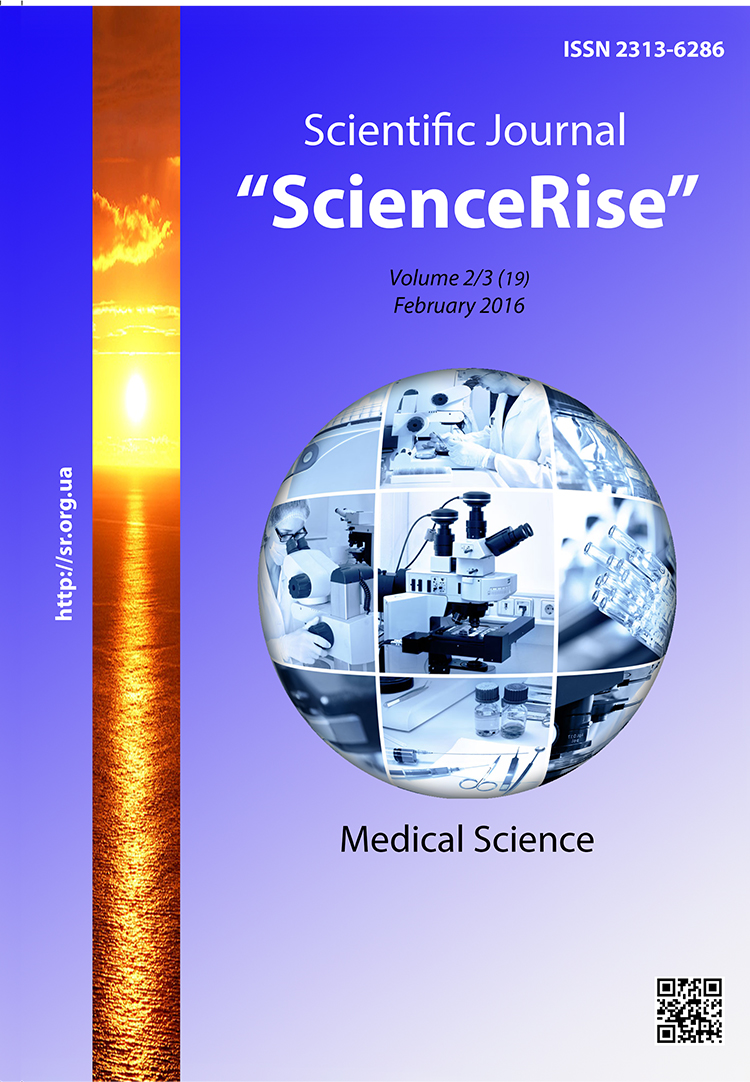The influence of footbolers functional status on the success in football competition
DOI:
https://doi.org/10.15587/2313-8416.2016.60820Keywords:
functional state, variation pulsometry, fazagraf, football, assessment of success in competitionAbstract
The search of the simple and minimally invasive methods of diagnostics of professional footballer functional state was always the subject of great interest of sport medicine and physiology.
The aim of research was to reveal the connection between the indices of functional state and indices of the football player success in competition.
Methods of research. The research included 28 football players – candidates to the national team of Ukraine less than 19 years old (U-19). The research was carried out during three matches of European Championship (U-19) and included the use of FAZAGRAF™ method for diagnostics of the functional state. This method is based on analysis of ascending and descending parts of T wave of the standard electrocardiogram and also attended with the change of heart rate variability for assessment of the state of vegetative nerve system and regulatory systems of organism. We carried out the expert assessment of effectiveness of competitive activity of footballers during the matches of tournament and also used the methods of mathematical statistics.
Results of research. The index of integral assessment of success in the game during the tournament was in the mean 0,46±0,016. There was revealed a correlation between the functional state and the success in game. There were received adequate models for forecasting the success in game during the matches.
Conclusion. The success of playing activity of footballers depends on their functional state the day before match. The most informative indices are rest pulse, symmetry of T wave and tension index according to Baevsky. With the help of received models it is possible to forecast the success of game of every footballer during the match. It helps trainer with the choice of players for the football match
References
Shumihina, I. I. (2015). Adaptivnyie vozmozhnosti regulyatornyih system оrganizma legkoatletov pod vliyaniem trenirovochnyih sborov [Adaptive possibilities of regulatory systems of athlete`s organism under the influence of training camps exercises]. Fizicheskaja kul'tura, sport i zdorov'e, 25, 123–129.
Struganov, S. M., Galimov, G. Ja. (2012). Etap spetsialnoy podgotovki kvalifitsirovannyih sportsmenov v trenirovochnom protsesse [Stage of special readiness in training process of skilled sportsmen]. Vestnik Buryatskogo Gosudarstvennogo universiteta, 13, 178–182.
Antonov, A. A. (2013). Beznagruzochnaya otsenka funktsionalnogo sostoyaniyaorganizma sportsmenov [Loadless assessment of a functional condition of an organism of athletes]. Poliklinika, 1, 37–41.
Taymazov, V. A., Bakulev, S. E. (2007). Razvitie sistemnogo podhoda k izucheniyu deyatelnosti cheloveka [The development of a systematic approach to the study of human activity]. Nauchno-teoreticheskij zhurnal “Uchenye zapiski”, 1 (23), 68–75.
Solodkov, A. S. (2005). Itogi i perspektivyi issledovaniy problemyi adaptatsii v sporte [Results and prospects of researches of adaptations problem in sport]. “Uchenye zapiski universiteta im. P. F. Lesgafta”, 18, 65–75.
Apanasenko, G. L., Morozov, N. V. (2002). Sovremennyie podhodyi k otsenke sostoyaniya zdorovya sportsmena i ego korrektsiya [Modern approaches to an assessment of a state of the athlete`s health and its correction]. Lіki Ukrainy, 9, 49–51.
Bashkireva, A. V., Chibisov, S. M., Halabi, G. et. al (2011). Gendernye razlichiya biorytmologicheskych kharakteristic tsyrkadnogo ritma u sportsmenov parashutistov v period sorevnovaniy [Gender differences of biorhythmological characteristics of circadian rhythm in athletes parachutists during the competition]. Mezhdunarodnyj zhurnal prikladnyh i fundamental'nyh issledovanij, 8, 93–94.
Ataev, O. R. (2014). Optimizatsiya podgotovki futbolistov vysokoy kvalifikatsii v godichnom tsikle [Optimization of training of high-qualified football players in the annual cycle]. Molodoj uchenyj, 6, 837–840.
Minina, E. N. (2014). Novyiy podhod v izuchenii vzaimosvyazi funktsionalnoy podgotovlennosti i elektrogeneza u sportsmenov s ispolzovaniem etalonnogo kardiotsikla [New approach in studying of interrelation of functional readiness and electrogenesis at athletes using a reference cardiocycle]. Vestnik novykh meditsinskikh tekhnologiy. Elektronnyy zhurnal, 8 (1), 1–5. doi: 10.12737/5950
Iellamo, F., Pigozzi, F., Spataro, A., Lucini, D., Pagani, M. (2004). T-Wave and Heart Rate Variability Changes to Assess Training in World-Class Athletes. Medicine & Science in Sports & Exercise, 36 (8), 1342–1346. doi: 01.mss.0000135796.75091.8a
Faynzil'berg, L. S. (2013). Kompyuternaya diagnostika po fazovomu portretuelektrokardiogrammyi [Computer diagnostics by a phase portrait of the electrocardiogram]. Kyiv: Osvita Ukrainy, 191.
Zelencov, A. M., Lobanovskij, V. V. (1985). Modelirovanie trenirovki v futbole [Simulation training in football]. Kyiv: Zdorov`ya, 136.
Antomonov, M. U. (2006). Matematicheskaya obrabotka i analiz mediko-biologicheskih dannyih [Mathematical processing and analysis of medico-biological data]. Kyiv: Firma malogo druku, 558.
Downloads
Published
Issue
Section
License
Copyright (c) 2016 Павел Петрович Павличенко

This work is licensed under a Creative Commons Attribution 4.0 International License.
Our journal abides by the Creative Commons CC BY copyright rights and permissions for open access journals.
Authors, who are published in this journal, agree to the following conditions:
1. The authors reserve the right to authorship of the work and pass the first publication right of this work to the journal under the terms of a Creative Commons CC BY, which allows others to freely distribute the published research with the obligatory reference to the authors of the original work and the first publication of the work in this journal.
2. The authors have the right to conclude separate supplement agreements that relate to non-exclusive work distribution in the form in which it has been published by the journal (for example, to upload the work to the online storage of the journal or publish it as part of a monograph), provided that the reference to the first publication of the work in this journal is included.

